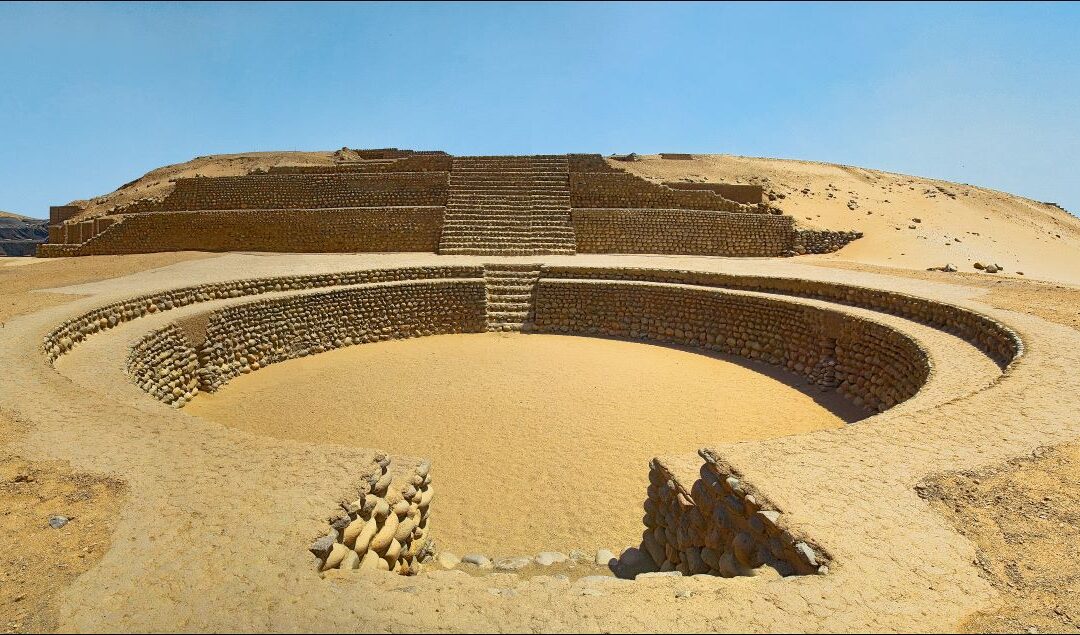Smithsonian students who join our Peru program this summer have the unparalleled opportunity to participate in cutting-edge, ongoing research in the field of archaeology. Read on to learn what sets this program apart, and why Peru is one of the best places in the world for high school students to explore archaeology, anthropology, and cultural heritage.
Why Study Archaeology in Peru?
Peru’s Rich Archaeological Legacy: Peru was home to one of the fastest-growing empires in the world, the Inca Empire, spanning the Andes Mountains through what are now six South American countries. The iconic Inca architecture is easily recognizable with its impeccable stonework and elaborate terraced site layouts. The Inca, whose empire expanded for a mere century from roughly 1430 to 1570, were building on the foundations of thousands of years of diverse Andean cultural and architectural styles and techniques. From the impressive circular monuments at the pre-Ceramic city of Caral, to the winding tunnels of the underground temples at Chavin de Huantar, to the expansive earthworks of the Nazca Lines, Peru’s pre-Inca history is astonishing and features enormous regional diversity.
Prior to the Spanish colonial era in the late 1500s, Peruvian archaeological sites and artifacts are measured by what archaeologists call “horizons”—notable periods of cultural, artistic, political, and architectural patterns spanning regions. Each horizon is characterized by recognizable monumental structures and distinct decorative styles, culminating in the Inca Empire, which produced one of the most iconic archaeological sites in the world, Machu Picchu. This diverse and impressive archaeological legacy makes Peru one of the most exciting places on earth to dive into the field of archaeology and celebrate cultural heritage.
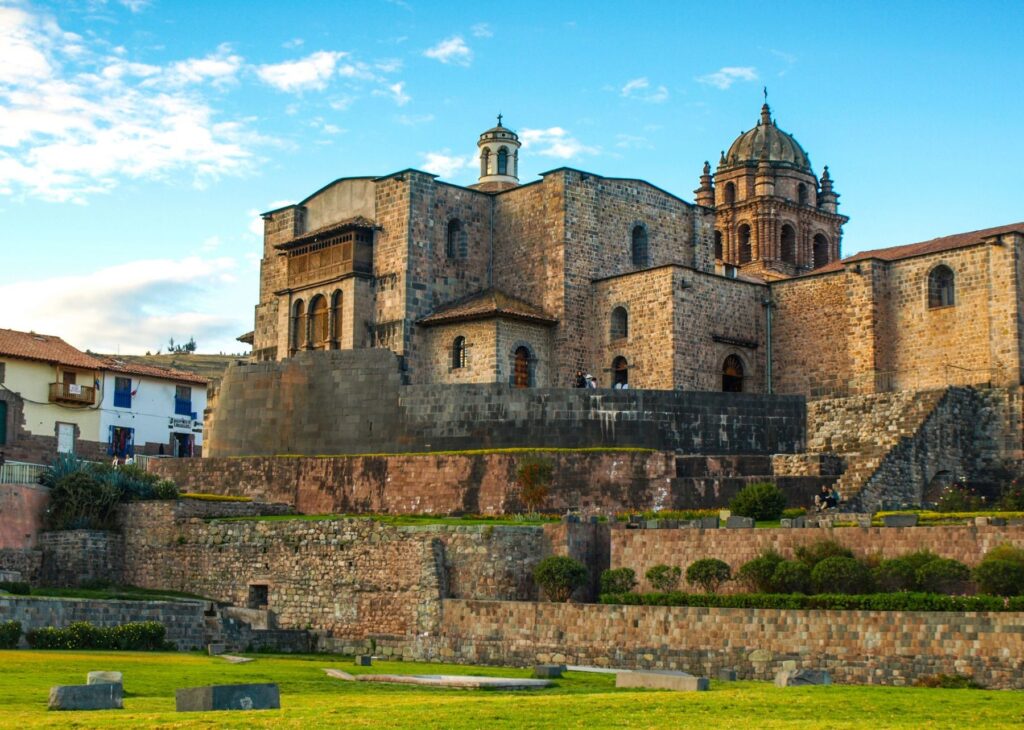
Qorikancha, historic center of the Inca Empire, underneath the Church of Santo Domingo in Cusco, Peru
Impressive Techniques for Architectural Preservation: Andean societies throughout history have had elaborate social systems that take advantage of diverse ecozones and natural resources. Many archaeological sites across different periods show a central organizational and religious/political center with smaller satellite communities spread out across the slopes. These organizational centers often feature large, monumental architecture built for prominence and permanence. These architects expertly constructed structures with anti-seismic techniques and complex drainage systems to prevent damage from earthquakes and landslides. In the intervening years, many Spanish Colonial and modern buildings in Peru have crumbled in earthquakes, revealing intact pre-hispanic structures underneath! In addition to techniques against earthquakes, much of the pre-hispanic architecture in the Andes was built from materials like stone and clay bricks, rather than organic materials like wood, which rot and biodegrade.
Ideal Environmental Conditions for Preservation: The environmental conditions of the Andes are also uniquely favorable for preservation, helping to preserve delicate materials that were used at Peruvian sites, such as paints, gourds, and textiles. The cool temperatures at highland sites in the Andes create a refrigeration effect that helps preserve organic material. The dry desert conditions on much of Peru’s coast are also favorable for the preservation of adobe structures and organic material. The combination of these factors means that many of Peru’s archaeological sites and artifacts found at them are incredibly well preserved compared to other regions of the world.
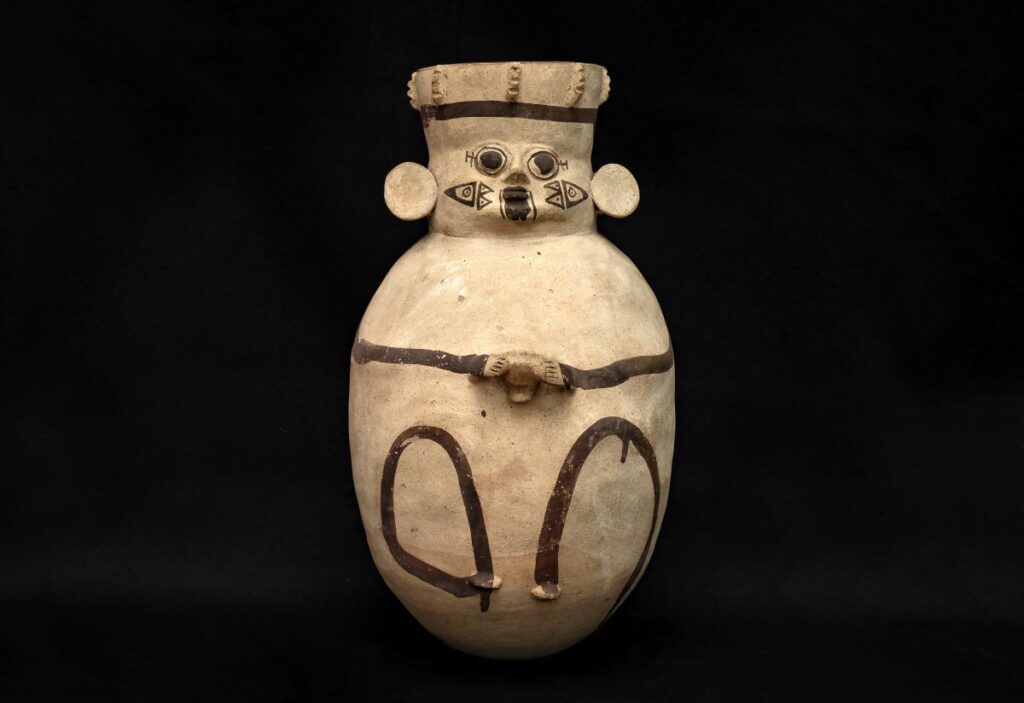
Chancay drinking vessel, approximately 1,000 years old
What Makes Our Peru Archaeology Program So Unique?
Hands-on Archaeological Fieldwork: Because of its incredible archaeological legacy, Peru is host to countless research projects. Archaeologists and anthropologists are learning more about Peru’s history every day, all over the country, both at newly excavated sites and excavations that have been ongoing for decades. Typically, visitors to Peru will only access a small fraction of this information at a handful of Peru’s most famous archaeological sites and museums. This Smithsonian Student Travel program (Peru: Archaeology & Andean Culture) not only ventures to lesser known sites and speaks to experts about their research, high school students on this program get to roll up their sleeves and participate directly on an active archaeological dig alongside Peruvian archaeologists. An experience often reserved for professional archaeologists and university students in the field, Smithsonian students will learn to excavate, identify, map, document, classify, and care for archaeological structures and artifacts. For four days, the group stays with a local team of archaeologists and participates in all aspects of fieldwork at a pre-Inca site that has never been researched before.
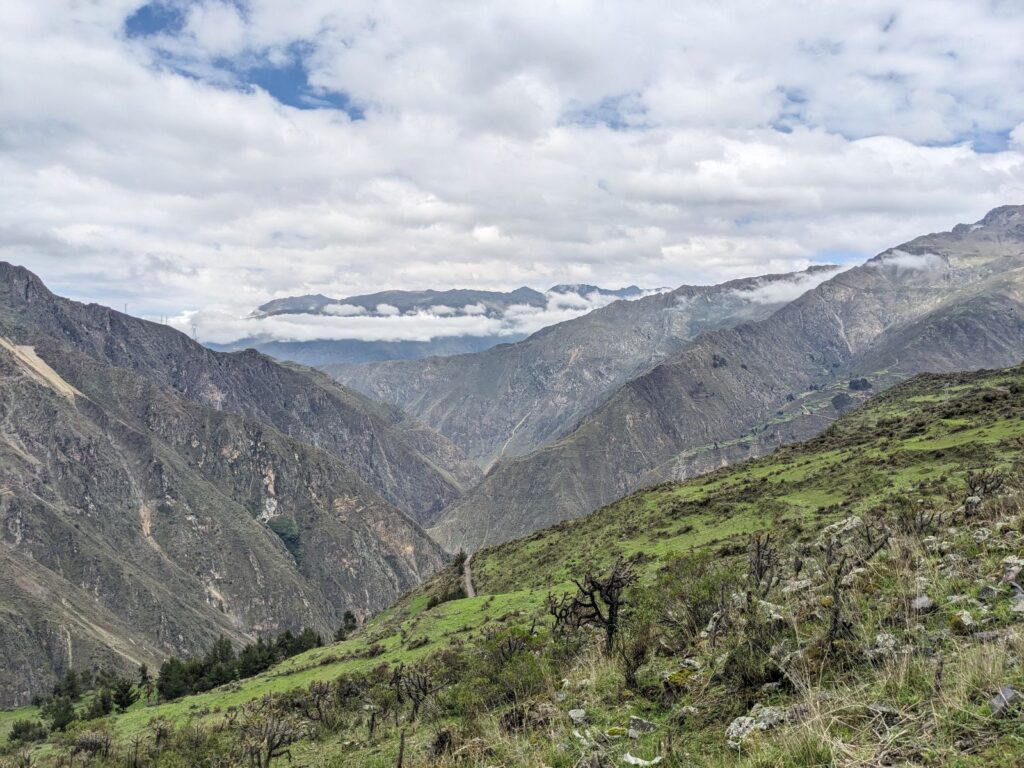
View from the archaeological site of Carcata in the San Mateo District, Huarochirí, Peru
Rare Opportunity in the Huarochirí Province: The excavation site that the group visits is located in the Andes mountains, in the Huarochirí Province of Peru. Although it is easily accessible from the capital city of Lima, the Huarochirí Province is not often visited by travelers to Peru. The province has a unique and fascinating history as it is home to a document called the Quechua Manuscript of Huarochirí, a one-of-a-kind text dating to 1608, chronicling local histories, legends, traditions, and stories in the native local language, Quechua. This document provides unique narrative and context to the region’s countless archaeological sites, many of which have yet to be studied in depth. Our program has the rare opportunity to contribute to local research efforts in this budding region of archaeological research in Peru. In addition to the fieldwork, students get to explore the stunning landscapes, be immersed in local communities, and taste the distinct local cuisine of Huarochirí.
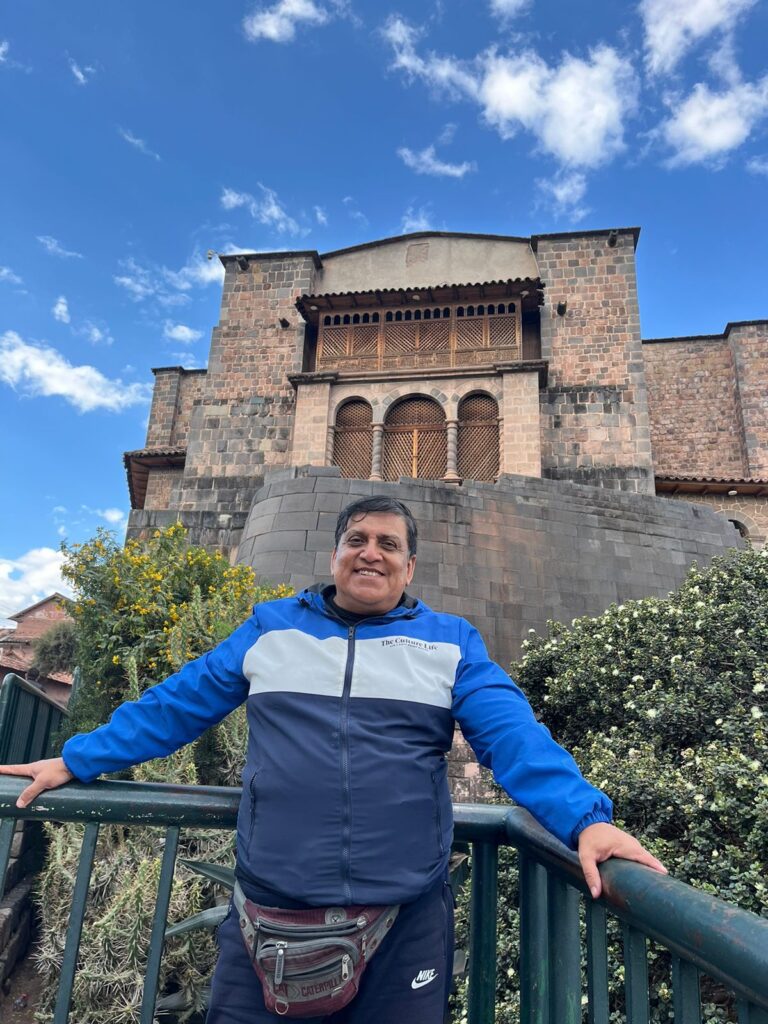
Smithsonian Student Travel Expert Dr. Guido Lombardi in front of the Qorikancha, Cusco, Peru
Insights from Experts: Students on this program work with many professionals carrying out ongoing research in archaeology, anthropology, and community engagement, including Dr. Guido Lombardi, the Smithsonian Student Travel Expert. Guido, a bio-archaeologist and medical doctor, is an expert in mummies and has led research on pre-hispanic human remains in Peru. Guido helped found Huaycan Cultural in his home city of Huaycan, an organization that has worked to fund research and protection measures at the local archaeological site that our group visits, Huaycan de Pariachi.
In addition to his professional experience, Guido speaks over five languages, is an accomplished hobby botanist, and has traveled all over the world. Our students spend five days with Guido visiting sites, discussing their independent project ideas, and asking questions about Peruvian archaeology, cultural resources, and how local communities are rallying around their heritage and developing sustainable models for preserving history and culture.
In all, this program presents an incredibly unique opportunity for students, immersing them in the diverse archaeological legacy of Peru and the ongoing research that continues to fuel new discoveries and insights. Click here to see the program itinerary and details.
Watch: Program Overview

